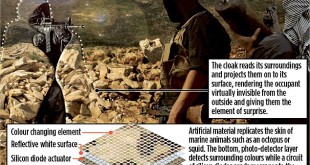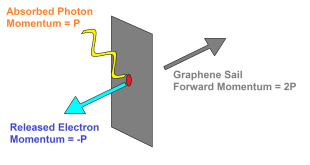It is predicted that LEDs will be the ultimate light source in the near future powering indoor illumination, outdoor lamps, traffic signs, advertising displays, car headlights/taillights, etc. Now another technique promises to double the utility of light-emitting diodes (LEDs) by using their light as a medium for communication in a similar manner as Wi-Fi. This new technology is developed by German physicist, professor Harald Haas is known as Li-Fi .Unlike Wi-Fi that uses radio frequency (RF) signals to transmit data from a wireless access point, Li-Fi uses visible light to transmit data. Light communication is already an established technology in TV remotes which uses infrared light to change the channel or turn up the volume. But unlike the TV remote, Li-Fi uses visible light communications (VLC), enabling the dual purpose of illumination and communication.
The wireless-fidelity (Wi-Fi) with maximum speed of 150 Mbps, according to standards of 1EEE 802.11n, is not sufficient to fulfill the need of this future network. The visible light spectrum is 10,000 times larger than the entire radio frequency spectrum hence can provide large data rates to deliver networked, mobile, and high-speed communication. Researchers have reached data rates of over 10 Gbit/s, which is more than 250 times faster than superfast broadband. Li-Fi is expected to be ten times cheaper than Wi-Fi. The LED lights require so little energy; they can be powered by a standard ethernet cord. Inventor Harald Haas has also suggested that the smart lights could be powered by solar cells charging batteries. Light rays from traditional bulbs or LEDs does not harm human eye .
Li-Fi can provide the military with high speed, non-detectable communications that cannot be identified through current direction-finding technology. The high-speed, multi-frequency communication capability inherent in Li-Fi can free up bandwidths used in critical legacy applications that haven’t converted to newer technology. With Li-Fi, inter-soldier, inter-vehicle, and inter-ship line-of-sight communications can render mobile units ubiquitous relays of information and orders without any verbal communication, while remaining totally invisible in the battlespace.
Communicating underwater has always been a hassle. Radio transmissions, the ubiquitous wireless standard above the waves, can’t transmit very far before being entirely absorbed by the water. Acoustic transmissions (think sonar) are the preferred choice underwater, but they suffer from very low data rates.
The Navy is interested in using Li-Fi to improve submarine communications, since radio waves travel poorly under water and current acoustic communications are slow. The underwater VLC in the blue/green spectral range (450 nm-550 nm) is able to achieve data speeds of hundreds of Mbps for short ranges (less than a hundred meter) complementing long range acoustic communication.
Researchers Use Lasers to Bring the Internet Under the Sea
Underwater Wi-Fi is exactly what researchers at the King Abdullah University of Science and Technology (KAUST) in Thuwal, Saudi Arabia, have developed. The system, which they call Aqua-Fi, uses a combination of lasers and off-the-shelf components to create a bi-directional wireless connection for underwater devices. The system is fully compliant with IEEE 802.11 wireless standards, meaning it can easily connect to and function as part of the broader Internet.
Here’s how it works: Say you have a device underwater that needs to transmit data (for the KAUST researchers, it was waterproofed smartphones). They then used a regular old Wi-Fi signal to connect that device to an underwater “modem.” Specifically, they used a Raspberry Pi to function as that modem. The Raspberry Pi converted the wireless signal to an optical signal (in this case, a laser) that was beamed to receiver attached to a surface buoy. From there, established communications techniques were used to send the signal to an orbiting satellite. For the underwater device to receive data, the process is simply reversed.
Aqua-Fi stems from work that the KAUST researchers did back in 2017, when they used a blue laser to transmit a 1.2-gigabit file underwater. But that wasn’t interesting enough, according to Basem Shihada, an associate professor of computer science at KAUST and one of the researchers on the Aqua-Fi project. “Who cares about submitting just a file?” he says. “Let’s do something with a bit more life.” It was that thinking that spurred the team to start looking at bi-directional communications, with the ultimate goal of building a system that can transfer high-resolution video.
Shihada says it was important to him that all of the components be off the shelf. “My first rule when we started this project: I do not want to have something that is [custom made for this],” he says. The only exception is the circuit in the Raspberry Pi that converts the wireless signal to an optical signal and vice versa. The team used LEDs instead of lasers in their first design, but found the LEDs were not powerful enough for high data rates. With LEDs, the beams were limited to distances of about 7 meters and data rates of about 100 kilobits per second. When they upgraded to blue and green lasers, they achieved 2.11 megabits per second over 20 meters.
Shihada says that currently, the system is limited by the capabilities of the Raspberry Pi. The team burned out the custom circuit responsible for converting optical and wireless signals when, on two occasions, they used a laser that was too powerful. He says that in order for this setup to incorporate more powerful lasers that can both communicate farther and transmit more data, the Raspberry Pi will need to be swapped out for a dedicated optical modem.
Even with the limitations of the Raspberry Pi, the KAUST researchers were able to use Aqua-Fi to place Skype calls and transfer files. But there’s still a big problem that needs to be addressed in order to make a system like Aqua-Fi commercially viable; and it can’t be solved as easily as swapping out the Raspberry Pi. “If you want to imagine how to build the Internet underwater,” says Shihada, “laser alignment remains the most challenging part.” Because lasers are so precise, even mildly turbulent waters can knock a beam off course and cause it to miss a receptor.
The KAUST researchers are exploring two options to solve the alignment problem. The first is to use a technique similar to the “photonic fence” developed to kill mosquitoes. A low-power guide laser would scan for the receptor. When a connection is made, it would inform another, higher-powered laser to begin sending data. If the waves misaligned the system again, the high-power laser would shut off and the guide laser would kick in, initiating another search. The other option is a MIMO-like solution using a small array of receptors, so that even if the laser emitter is jostled a bit by the water, it will still maintain a connection.
Underwater Li-Fi to be used by the Navy
The U.S. Navy has funded a research program to delve into the development of Li-Fi, a method of communication via LED lights. Li-Fi could potentially be the answer to society’s increasingly progressive data needs. Instead of using generic radio waves to transmit Wi-Fi signals, this system takes a different approach. Li-Fi devices have a system of blinking lights that are used for transmitting data.
The specific uses for Li-Fi are infinite. For example, the Navy wants to employ the use of Li-Fi to enhance submarine communication systems. They currently use a slow and antiquated system for underwater communication that does not quite jibe well with the poor acoustics that lie underwater. Radio waves also do not travel efficiently underwater. For use in petrochemical plants or on airplanes, Li-Fi emissions would be a great option, since Wi-Fi tends to interfere with onboard electronics.
The future applications that the government has in mind for Li-Fi could serve a much more vast purpose than just for underwater, airplane, and chemical plant usage. Currently, the Federal Communications Commission has explicated cautions of crowding in wireless communications because the radio frequency spectrum is beginning to get way too full. The implementation of Li-Fi could clear out the spectrum of radio frequency. Since the spectrum of light is 10,000 times larger than the spectrum of radio frequency, there is more flexibility for the transmission of data across many channels. Interestingly enough, the light doesn’t have any effect on radio waves, allowing Wi-Fi and Li-Fi to respectively cohabitate. Electronics could even eventually change back and forth between Wi-Fi and Li-Fi.
References and Resurce also include:
https://spectrum.ieee.org/tech-talk/telecom/internet/researchers-lasers-bring-internet-underwater?
 International Defense Security & Technology Your trusted Source for News, Research and Analysis
International Defense Security & Technology Your trusted Source for News, Research and Analysis

